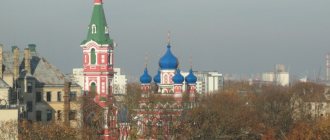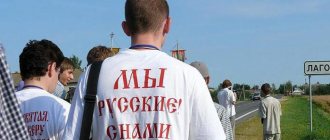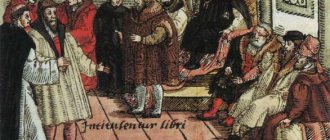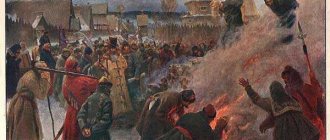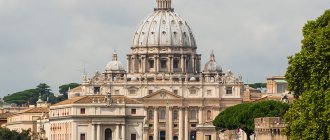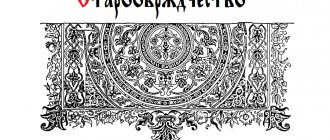The main religion in Germany is Christianity. At the end of 2021, the share of Christians amounted to 58-59% of the total population, of which about 55% were representatives of two faiths - Catholics and Protestants. The number of both is approximately the same (the difference is less than 2%), but the distribution across the lands is uneven - if the south and west are predominantly Catholic, then the north is Protestant.
In the east of the country, the population for the most part considers itself atheists and agnostics, which is fully explained by the long stay of these territories under the influence of Soviet ideology.
Orthodox make up from 1.9-2.7%. Other Christians: Baptists, Pentecostals, Methodists, Jehovah's Witnesses, 7-day Adventists, Mennonites, Mormons, etc. – a total of about two dozen denominations.
About 5.5% of the population professes Islam and just under half of them are German citizens. All other religious communities combined make up less than 1% of the country's population: Buddhists, Yazidis, Jews, Hindus, Sikhs, Baha'is, etc.
35% of the population do not identify themselves with any community at all.
Religious affiliation is registered at the place of registration voluntarily and independently. Based on this information, the financial office of each federal state collects a church tax, which amounts to 2-3% of income. However, not all religious communities enjoy the right to levy such a tax.
Despite the fact that freedom of religion has been declared in the country, a church tax has been introduced in Germany
It is quite easy to understand which religion is the main among the Germans. The fact is that, according to data for 2021, the share of Christians in Germany was 58 - 59% of the total population, of which about 55% were representatives of two faiths - Catholics and Protestants.
58 — 59%
so many Christians in Germany according to 2021 data
The number of both is approximately the same (the difference is less than 2%), but the distribution across the lands is uneven - if the south and west are predominantly Catholic, then the north is Protestant.
In the east of the country, the population for the most part considers itself atheists and agnostics. This is explained by the long stay of these territories under the influence of Soviet ideology (the existence of the GDR).
European countries with a predominant German population. The colors highlight the different languages of the Germanic branch; West German and North German are separated in red. Most modern Germans live in Germany. Photo: upload.wikimedia.org
Orthodox Christians in Germany make up 1.9-2.7% of the population. The rest of the Christians are Protestants: Baptists, Pentecostals, Methodists, Jehovah's Witnesses, 7-day Adventists, Mennonites, Mormons, etc. — a total of about two dozen denominations.
About 5.5% of the population professes Islam and just under half of them are German citizens.
All other religious communities combined make up less than 1% of the country's population: Buddhists, Yezidis, Jews, Hindus, Sikhs, Baha'is, etc. 35% of the population does not consider themselves to be a member of any religious community at all.
2 — 3%
compiles church tax on the income of German residents
In Germany, religious affiliation is registered at the place of registration voluntarily and independently. Thus, it is possible to fairly reliably answer the question: what kind of faith do the Germans have?
Moreover, based on the information collected in this way, the Financial Service of each federal state collects a church tax, which amounts to 2-3% of income. Not all religious communities enjoy the right to levy such a tax.
Birthplace of the Reformation
It was Germany that became the center of reform of religious movements in Europe. It was here that different directions of the Protestant faith arose, which advocated changes in the approaches to communication between believers and the priesthood.
The Saxon monk Martin Luther became the banner of the Reformation, which changed not only the religious, but also the political and economic life of Europe. The Reformation also changed Germany, which turned into unions and associations of free microstates. They differed not only in the name of the ruler, but also in their faith, social structure and many other features.
Actually, such strong differences in the life of each of the lands come precisely from those times when peasants and citizens of cities were obliged to accept the faith of their lord and ruler. Most often, neighboring counties and principalities were opposite in their choice of religion. And therefore, due to different faiths and different views on life, conflicts often broke out, which sometimes escalated into full-fledged hostilities, the reason for which rarely anyone remembered.
Catholicism is one of the two largest faiths in Germany
Catholic and Protestant religious communities in Germany are the largest. That is why Catholicism in this country is considered one of the oldest and largest Christian denominations.
29,9%
how many Catholics were there in Germany in 2007?
As of 2007, there were 24,170,745 members of the Catholic Church, corresponding to 29.9% of the population. There are 27 dioceses (20 dioceses and 7 archdioceses) All dioceses are grouped into seven ecclesiastical provinces.
Nameplate: churches in Weingarten. Christianity dominates modern Germany. Photo: upload.wikimedia.org
The Catholic Church in Germany has the status of a public corporation. This means that she has the right to collect a church tax from her parishioners. The Catholic Church in Germany names it as the main component of its budget.
As for the history of Catholicism, the first Catholic dioceses on the territory of modern Germany arose immediately after the transformation of Christianity into the state religion of the Roman Empire.
Among them are the dioceses of Cologne (Province of Germany II), Mainz, Worms, Speyer (Province of Germany I), Trier (Province of Belgica I) and Augsburg (Province of Raetia II).
29,9 %
so many people in Harmania are Catholics
The Peace of Augsburg (1555) and the Peace of Westphalia (1648) divided the country into two zones - Catholic and Lutheran.
In 1921, diplomatic relations were established between the Vatican and Germany, eight years later diplomatic relations were established between the Vatican and Prussia, and in 1929 a concordat was concluded between them.
After the destruction of Nazi Germany by Allied forces in 1945, the Catholic bishops of Warmia and Breslau moved their sees to Germany, the remaining canons appointed diocesan administrators who were included in the Conference of Catholic Bishops of Poland.
Cologne Cathedral. Cologne Cathedral is considered a symbol of Catholicism in modern Germany. Photo: upload.wikimedia.org
After the unification of the Federal Republic of Germany and the German Democratic Republic in 1994, the apostolic administrators of Erfurt, Magdeburg and Görlitz were converted into dioceses.
The Berlin Conference of Catholic Bishops dissolved itself, the diocese of Berlin became an archdiocese, together with the dioceses of Dresden-Meissen and Görlitz, they formed the Ecclesiastical Province of Berlin.
The Apostolic Administration of Schwerin was united with part of the Diocese of Osnabrück into the Archdiocese of Hamburg, which together with the dioceses of Osnabrück and Hildesheim formed the Metropolitanate of Hamburg.
Currently, the Catholic community in Germany is going through hard times, as it is experiencing pressure from representatives of other religious faiths and, first of all, Islam.
Religion of the Third Reich
According to Hitler, the new Germany needed a new religion. Ahnenerbe specialists were entrusted with the development of a new religious doctrine that corresponded to the aspirations of the time. This was developed under the leadership of former theology professor Bergman. In it, Christ was declared an Aryan, and the Jews who crucified him were, accordingly, the quintessence of evil. The swastika became a sign of the new faith instead of a cross, and the church was supposed to remain purely national - no missionary activity was expected, the Aryan faith should belong only to the Aryans. The result was a vigorous mixture of Christian views, mysticism and occultism, generously seasoned with runic magic. In search of religious artifacts, expeditions were sent to all corners of the planet.
Today Germany is a secular state that provides its citizens with freedom of religion - back in 1919, changes were made to the country's Constitution, which separates the church from the state, and the state does not have the right to interfere in the internal affairs of the church.
Most German Protestants are united in the Evangelical Church of Germany
The Protestant religion in Germany is represented by the Evangelical Church in Germany or EKD. It is a union (union) of the Lutheran and Reformed state churches of Germany.
22
so many regional Protestant churches in Germany today
Today the number of its parishioners is 24,832,110 people. It is a confederation of 22 regional Protestant churches, but cannot be recognized as a church theologically due to denominational differences.
Nevertheless, in the ECG the churches have complete unity in terms of preaching and worship. Its headquarters are located in Hannover.
22 land churches. Lutheran churches are in blue, Unionist churches are in purple, Reformed churches are in red. The Evangelical Church in Germany is a confederation of 22 Protestant state Churches, which have complete unity in terms of preaching and worship. Photo: upload.wikimedia.org
The birth date of German Lutheranism is considered to be 1517, with Germany being its homeland.
The activities of Martin Luther's associate Melanchthon (leader of the Philippist party) contributed to the rapprochement of German Lutherans with German Calvinists, which the Gnesiolutheran party opposed.
The final separation from Catholicism occurred after the Council of Trent.
In 1817, by uniting the Lutheran Church of Prussia with Calvinist communities, the Evangelical Church in Prussia (Evangelische Kirche in Preußen) was formed (since 1875 - the Evangelical Local Church of the Old Provinces of Prussia (Evangelische Landeskirche der älteren Provinzen Preußens).
Church of the Old Prussian Union (Evangelische Kirche der altpreußischen Union), Lutherans who disagreed with the union formed the Evangelical Lutheran Church of Prussia.
There are female pastors in the Evangelical Church in Germany.
In July 1933, the German Evangelical Church Union was reorganized into the German Evangelical Church, and the position of Reichsbischof was introduced. In August 1945, the German Evangelical Church was transformed into the Evangelical Church of Germany.
In 1969, the Union of Evangelical Churches of the German Democratic Republic (GDR UEC) was formed from those who left the ECG: In 1991, the GDR UEC dissolved itself, and the local churches that were part of it re-entered the ECG.
Margot Kessman, pastor. Church Evangelical Church of Germany, Diocese Evangelical Lutheran Church of Hannover. The ECG has an institute for women pastors. Photo: upload.wikimedia.org
In our time, the ECG is a reformed church. For example, it allows homosexuals to be elevated to the priesthood. In 2007, the ECG adopted a declaration on “Strengthening Trust and Responsibility,” which endorsed same-sex monogamous partnerships.
The Evangelical Church does not have a vow of celibacy for priests, and the issue of allowing gay priests to enter into same-sex marriages remains controversial.
In addition, in Germany there is an institute for women pastors. There are currently four women bishops leading the land churches.
Pre-Christian Germany
Let's start from the beginning. The religion of ancient Germany, like all national cults of European peoples, in ancient times was represented by paganism. In this case, we are talking about the Nordic type of religiosity, which is similar in mythology and practice to Scandinavian authentic traditions.
The head of the ancient Germanic pantheon is Wotan, the father of the gods. He and his retinue, whose members are called aesir, live in the highest of the nine worlds - Asgard. And the mysterious place of their stay on earth is the Sacred Groves.
The pagan tribes of the Germanic lands were largely dependent on the power of the priestly class. Although their rights and privileges varied somewhat from community to community, in general, the priests concentrated judicial power in their hands, were in charge of public sacrifices and were engaged in divination.
By the 10th century, pagan traditions in the Germanic tribes came to a complete decline due to the spread of Christianity.
Orthodoxy is not recognized as a traditional religion in Germany
The Orthodox Church has never been considered an influential force in Germany, so Orthodoxy here is not a traditional religion. This is due to the fact that for 1054, Christians in Germany remained in the zone of Catholic influence.
In the 16th century, Protestantism began to spread in the German lands, while a number of territories of the country (Bavaria, Austria, etc.) remained faithful to Catholicism.
Council of the Holy New Martyrs and Confessors of Russia in Munich (ROCOR). Despite the fact that Germany is not an Orthodox country, representatives of almost all significant Orthodox Churches are present in it. Photo: upload.wikimedia.org
Russian Orthodoxy has been present in Germany for about 300 years. Already under Peter I in 1718, a chapel was opened in Berlin, which existed until 1837. Later, the embassy church was moved to the new building of the Russian Embassy.
His flock consisted of about five thousand Orthodox Christians: Russians, Serbs, Bulgarians, Greeks and Romanians. Modern Orthodox churches in Germany date back to the 19th and 20th centuries.
In the 60s and 90s of the 20th century, a number of religious buildings were built in Munich, Hamburg, Frankfurt, and Cologne. These are the so-called places of worship, that is, places equipped for worship, equipped with residential and non-residential premises.
300
Russian Orthodoxy has been present in Germany for so many years now
From the second half of the 19th century, Russian aristocrats and other representatives of Russian society went to Germany to relax and be treated in the waters, which became the reason for the construction of a number of Orthodox churches, for example, in Baden-Baden (1882) and Bad Ems (1876).
The world-famous temple of Carlsbad (Karlovy Vary), now located in the Czech Republic.
Russian Church in Bad Ems. Many Orthodox churches in resort towns in Germany were built by immigrants from Russia. Photo: upload.wikimedia.org
In Russian Orthodox parishes in Germany, depending on the nationality of the parishioners, both Church Slavonic and German languages are used in worship. In addition, in some parishes the liturgy and vespers are conducted entirely in German.
This circumstance is connected with the fact that a significant part of the flock of Russian churches in Germany are native Germans who converted to Orthodoxy, and some of the priests and bishops of Russian parishes are German-speaking.
1,14%
so many Orthodox Christians in Germany today
Orthodox Christians make up 1.14% of the country's population. On October 15, 2013, at a meeting of the Holy Synod of the Patriarchate of Antioch, the Metropolis of Germany was established, and Metropolitan Isaac (Barakat) was elected its manager.
Muslims are now recognized as an influential religious group in Germany
As a result of the wave of labor migration to Germany in the 1960s and 1970s, Muslims became a prominent religious group in Germany. According to the official census conducted in 2011, 1.9% of the German population (about 1.5 million people) declared themselves Muslim.
1,9%
or about 15 million German citizens are Muslims
Since, according to German law, a person is not required to declare his religious affiliation, this figure may be greatly underestimated. Independent estimates suggest 4.3 million German Muslims (5.4% of the population). Most of them are German citizens.
The Wünsdorf Mosque, in the Halbmondlager prison camp, was the first mosque in Germany, built in 1915 and demolished in 1925-26. Islam in Germany originated from the Ottoman Empire. Photo: upload.wikimedia.org
Most German Muslims are of Turkish origin. There are also small groups from Pakistan, the former Yugoslavia, Arab countries, Iran and Afghanistan. B
The majority of Muslims live in Berlin and major cities of the former West Germany. There are few Muslims in the former East Germany due to the fact that there was no labor migration in the region until 1989.
The majority of Muslims in Germany are Sunni (75%), there are also Shiite (7%) and Ahmadiyya (1%) communities.
Islam arrived in Germany with Ottoman diplomats and traders.
The first Muslims came to Germany as diplomats and traders in the 18th century, when diplomatic relations were established between the Ottoman Empire and Germany.
In 1745, King Frederick II created a Muslim unit in the Prussian army, consisting mainly of Bosnians, Albanians and Tatars. In 1798, a Muslim cemetery was created in Berlin. The Muslim cemetery, established in 1866, is currently functioning.
Cologne Central Mosque. The Germans are protesting against the construction of new mosques in the country. Thus, protests against the construction of a mosque in Cologne in 2007 resulted in riots. Photo: upload.wikimedia.org
In 1942, during the Second World War, the Islamic Institute (Ma'ahad al-Islam) was founded, now known as the Central Islamic Archives Institute of Germany (Zentralinstitut Islam-Archiv-Deutschland).
Moreover, after the war in the GDR, Islam, like other religions, was persecuted. In 1961, West German authorities invited foreign workers (guest workers), most of whom came to Germany from a rural area in Southeastern Anatolia (Turkey).
After this, the country's Muslim population began to grow rapidly. The local population opposes the construction of mosques in Germany. For example, a serious conflict arose around Muslim plans to build a large mosque in Cologne in 2007.
Why is religion needed?
Christianization of Germany
The religion of Germany began to change from the 4th century along with the active preaching activities of church missionaries - the Irish and Anglo-Saxons. Initially, the lands of the German tribes adopted the Arian version of Christianity, but over time, under pressure from secular authorities, political processes in the international arena and the activities of Catholic preachers, the population of Germany is increasingly imbued with the spirit of orthodoxy. The turning point in this regard is the mission of St. Boniface, who in the 8th century managed to reorganize the religious life of many tribes in Germany and unite them under the jurisdiction of a single metropolitanate located in Cologne. Boniface's personal commitment to the Roman Church and devotion to the papal throne determined the religious orientation of Germany for many centuries to come, making it a Catholic country.
Other religious communities also operate in Germany
Jews appeared in Germany in the Middle Ages. The country's Jewish community was constantly subject to persecution, including religious persecution. During the Holocaust during World War II, it was almost completely destroyed.
Nowadays, the number of followers of Judaism in Germany is 0.12% of the country's population, or 100 thousand people. It should be noted that there are representatives of other religious communities in the country, for example, Jehovah's Witnesses and Hindus.
Memorial plaque at the Mauthausen concentration camp. In Nazi Germany, Jehovah's Witnesses were persecuted. In modern Germany they operate on an equal basis with other officially recognized religious communities. Photo: upload.wikimedia.org
About 31% of the German population are atheists (in the territory of the former GDR there are atheists up to 70%).
This is due both to the trends and trends emerging in modern German society, and to the long-term presence of Soviet troops on German territory.
As a result, in 2005, about 45% of the country's population called themselves atheists or agnostics.
By leaving a comment, you accept the user agreement
Religiosity and confessions in modern Germany
V.P. Jerusalem
Formally and statistically, the number of citizens belonging to one of the two dominant churches by the beginning of the 21st century. completely leveled off - 26 million (2002). Together they make up about 63% of the population. Another approximately 1.5 million Christians are affiliated with churches of other denominations. The largest branch of them is Orthodoxy: 430 thousand belong to the Patriarch of Constantinople, 320 thousand belong to the Serbian Orthodox Church, approximately 70 thousand believers belong to the Bulgarian, Romanian and Antiochian Orthodox communities. About 150 thousand are under the jurisdiction of the Moscow Patriarchate and the Russian Orthodox Church Abroad. We can say that Orthodoxy is gradually becoming the third largest Christian denomination in Germany.
Christianity in Germany also includes Protestant communities of non-Lutheran denominations (approximately 0.5 million believers). These are Baptists (about 900 thousand) and Methodists (70 thousand), and the New Apostolic Church has grown noticeably in recent decades (over 400 thousand members).
The latter is a very specific branch of Christianity and has a pronounced sectarian-authoritarian character with rigid hierarchical structures converging into a single international center in Zurich (there are approximately 7 million followers in the world, the German organization is the largest in Europe). The New Apostolic Church resolutely refuses contact with other areas of Christianity. Its defining features are deep self-isolation from social life in all its aspects (culture, politics, sports), the strictest chastity, and real psychoterrorism towards those who hesitate.
Thus, approximately 54 million inhabitants of modern Germany are classified as Christian churches. Joining 17 million The GDR, with its absolutely dominant position of the Lutheran-Evangelical Church, did not so much strengthen its position or the general Christian confession as it became an additional impetus for general secularization.
Judaism is also traditional and has the status of a corporation of public law. Before the Nazi Holocaust, Germany was inhabited by approx. 0.5 million Jews. After the war, barely 15 thousand of them survived. By the time the “wall” fell, the Jewish community numbered approximately 30 thousand members. Its more than tripling (to 102 thousand by 2003) occurred almost exclusively due to emigration from Russia, Ukraine, Belarus, and other states on the former territory of the USSR - a total of 200 thousand. Arriving at the invitation of Jewish organizations, less than half of those who arrived (to For the most part, doctors, engineers, scientists, teachers of pre-retirement and retirement age without knowledge of German or Jewish languages, practically without religious traditions) joined the life of 89 existing Orthodox Jewish communities. Religious and cultural life barely glimmers in them: despite government assistance, funds are usually not enough. In addition, there is an acute shortage of rabbis. The leaders of the Central Council of Jews are full of pessimism: in the next twenty years, the Jewish community in Germany may cease to exist altogether.
The third largest religious community (after Catholicism and Protestantism) is the Sunni Islamic community, which has emerged over the past half century mainly from those who settled in Germany since the 60s. Turkish guest workers; later they were joined by immigrants from Afghanistan, Iran and other Eastern countries. In some large West German cities (Cologne, Frankfurt, etc.) and in Berlin, first of all, entire Muslim enclaves emerged. There are over 2 thousand mosques, houses of worship and cultural centers in the country. The presence of approximately 3.2 million Muslims, who are difficult to assimilate even in the first generation, represents a serious socio-political, cultural and psychological problem for the country. In connection with the rise of Islamic terrorism and, more broadly, radical fundamentalism, security problems for the country have arisen in many ways in a completely new way. According to estimates from the relevant services, at least 30 thousand supporters of Islam can be classified as its radical militant direction. Calls for building a Sharia state in Germany and for violence, often heard in mosques, have for some time now made it necessary to supervise mosques and clubs by the Office for the Protection of the Constitution. The problem of the Islamic cultural and religious minority in Germany is so complex and specific that it should be the subject of special consideration.
An original and relatively recent trend is the appeal of Germans, especially younger generations, to such exotic religions in these latitudes as Hinduism (about 1 million followers), Buddhism (about 250 thousand adherents), Bhagwanism and Sikhism (5 thousand converts each).
It is reasonable to preface the examination of the structures and situation in both leading Christian churches in Germany with a reminder of the historically established spatial and geographical unevenness of their distribution. Since the Reformation and religious wars of the 16th-17th centuries. The south of the country (primarily Bavaria) has always remained Catholic, while (north of the so-called 'Main line', i.e. from the Main River) the North and North-East have become predominantly Lutheran-Evangelical. With one, however, important exception: the west-central region, roughly along the course of the Rhine and Main, where the once oldest and most influential archbishoprics of Mainz and Cologne held vast territories and a spiritual-political monopoly for centuries, and remain to this day a region of dense Catholic culture , largely with a special socially oriented connotation. In the mid-90s. the formal relationships looked something like this. Bavaria and Saarland - over 60% of the population belonged to the Catholic Church; Baden-Württemberg, North Rhine-Westphalia - from 40 to 60%.
The domains of the predominant influence of Protestantism remain Lower Saxony and Schleswig-Holstein, while in Hesse there is generally parity, and in the “new eastern states” (with 10-15% of the population formally classified as Protestant) it absolutely triumphs - as the historical legacy of GDR socialism - secular worldview In the early 90s. 80% of East Germans did not identify themselves with any church, over 40% stated that issues of faith were not important to them at all, and less than 7% attended church at least once a month.
Despite the weakening of the religious-organizational ties of the absolute majority of Germans, the orientation towards one or another church structure inherited from the family, supported by the surrounding traditionalist environment, is to this day an important background factor in the general political culture, individual political orientation and choice. As is known, in Bavaria, Baden-Württemberg, Rhineland-Palatinate, the political leadership of Christian Democrats is almost unshakable (40-50% of the votes in elections to the Landtag), while North Rhine-Westphalia, Lower Saxony and Brandenburg are, in a mirror-exact reflection, the stronghold of social Democrats.
By the end of the 90s, at the turning point from the second, record-long stay of the CDU/CSU at the helm of federal power (the 'Kohl era' from 1982 to 1998) to the 'red-green coalition' (SPD - Green Party led by G. Schröder), as well as in the early federal elections of 2005, the 'Main line' emerged with striking clarity: the entire North - social democratic, 'red', the entire South (Bavaria, Baden-Württemberg, Saxony and Thuringia) under the leadership Christian Democrats, 'black'.
The defining feature of the religious situation in Germany at the beginning of the 21st century is that it is far advanced, bordering on the decline of both Christian churches - Lutheran and Catholic, and a reduction in their mass influence and socio-political role. This process has its own diverse, including purely material, financial, property, and personnel expressions.
The number of nominal (i.e., those registered with a particular church) parishioners decreased over 1990-2002 among evangelicals from 30 to 26 million, among Catholics - from 28 to 26 million. So, by 8 million, about a quarter of Western and up to two-thirds of East Germans never, including on holidays or family celebrations, look into churches. Even on the Christmas holidays, so closely associated with the specific German tradition of a “cozy” way of life, more than a third of the “Wessies” and more than half of the “Ossies” do not attend services. A significant part of the population (up to half!), especially residents of large cities, refuse weddings and christenings. Even among families registered with the Catholic Church, the rate of newborn baptism in 2003 was a third lower than just a decade earlier.
Since the mid-60s. the number of people leaving church communities in the 'old' Germany ranged from 250 to 300 thousand per year (the procedure, it must be said, is very complicated, especially in Catholicism). The latest data for 2003 is 180 thousand exits among Protestants and 117 thousand among Catholics.
The steady shrinkage of communities, the decline in attendance at services, the tax reform of the late 90s, which also lowered church tax rates, and other circumstances have put the church in a situation that, according to its hierarchs, is close to a crisis. The very spiritual care of parishioners often rests on the lack of funds. On a significant scale, due to the reduction in flocks and the lack of funds for repairs and maintenance of churches, they simply have to close them, rent them out, or even demolish them. Social studies say that of the 35 thousand churches existing in the country, one third can be sold without affecting the practice of worship.
And still there are not enough shepherds. In 2001-2003 The Catholic Church lost 900 priests. 9 thousand priests send services to 13 thousand parishes (in the 70s there were 26 thousand, and even in 1987 - over 12 thousand). It was necessary to take such extraordinary measures as inviting 1.5 thousand clergy not only from neighboring Poland, but even from India.
The "renewal" movement in the Catholic Church is constantly seeking permission to at least perform weddings and funerals for non-ordained activists from among the parishioners. Due to the impoverishment of the church treasury, it is necessary to curtail both social and charitable activities, and to lay off staff from social institutions (hospitals, schools, shelters, kindergartens, cemeteries, etc.). Life forces churches to chase sponsors ('fundraising'), develop their business (hotels, travel agencies, etc.), engage in petty trading (T-shirts with pictures, souvenirs), rent out church premises for provocatively secular events (for example, fashion shows). The church bureaucracy is urgently mastering the methods of modern marketing and approaching its followers as clients whose wishes, sometimes poorly combined with piety and ceremony, must be met halfway. The project of both Christian churches called “Taste a little of the monastic way of life” is distinguished by marketing ingenuity and a subtle consideration of the psychology of the modern urbanized individual, squeezed by harsh conditions and a high pace of life. Dozens of monasteries provide their cells to those who wish to join for a time the relaxed structure of monastic life, systematic divine services and community work, and thus at least remotely feel the attractiveness of spiritual contemplation and Christian values. The most widespread and effective type of “work with the public” of both Catholics and evangelists remains the so-called. church days (kirchentag), which allow one to go beyond the limited framework of canonical services and the churched flock. These are mass events of parishioners and friends of the church. For Catholics, this is a tradition dating back to 1848; the evangelical church began to hold them a century later. Evangelical days of the church are a successful form of combining worship services, in-depth theological discussions, seminars and mass, festival-type events - political and cultural dialogues, concerts, exhibitions. At the same time, the Evangelical Church of Germany (ECG) as an institution recedes into the background; its highest bodies do not prescribe the topics and are not even the actual organizers of the Days. Days of the Evangelical Church, often acquiring a distinct political overtone (opposition to the remilitarization of Germany in the 50s or the 'anti-missile' movement in the 80s, commemoration of the victims of Nazism, in particular Soviet prisoners of war). The days do not end with the adoption of any resolutions or declarations. Their main function is the moral and emotional disinhibition of social consciousness, its elevation above the pragmatic, regulated everyday life.
The basis for the sharp weakening of the influence of churches lies, naturally, first of all, in the progressive, far-reaching and irreversible secularization of mass consciousness. Regular sociological research convincingly reveals this process. The 1996 EMNID survey revealed something of a historical milestone: God had lost the faith of most Germans. Only 45% declared their confidence in its existence (28% and 27%, respectively, denied or doubted it. Within the borders of the former GDR, only 20% of the population confirmed their piety. Moreover, in terms of the rate of loss of faith, Catholics were almost not inferior to Protestants, although among them, especially among women, older people and CDU/CSU voters, the majority still considered themselves believers. The loss of faith in God is most often justified by two arguments: 'The Church's image of God is out of date' and 'Faith in God is undermined by the disasters that befall people.' in fact, the faith of even 2/3 who consider themselves believers (2005) is very vague, mosaic, contradictory: Catholics who accept the Hindu idea of multiple birth-reincarnation, Protestants who do not perceive the Lord as our Father, deny the Trinity, and at the same time the presence God in everyday life (more than half recognize him exclusively as the Creator.) For many Germans, identifying themselves with the Christian faith is primarily a general cultural context, a distinction from Islam, and not faith in the proper sense.
In modern society, the church and its pastors are losing their function as spiritual mentors, “teachers of life,” who have almost monopoly authority in a variety of areas, in resolving moral and legal everyday conflicts. Both churches are finding it increasingly difficult in the conditions of the steady spread of scientific, natural-scientific ideas about nature, society, and man. In the face of modern information networks - books, press, electronic media, the Internet. The creeds disseminated by churches and their positions on major moral issues are increasingly less and less accepted by society without objection, with confidence in their competence (only 16% of Germans accept the biblical version of the origin of life).
Its position on the issues of marriage (its indissolubility) and sexual morality had particularly grave consequences for the Catholic Church. The papal encyclical of 1968, condemning contraception, revealed to the entire society the deepest conservatism and isolation from the life of the church; in Germany, it downright discredited it. As well as her position and the position of the CDU/CSU in the 60-80s. intense political struggle around the 218 criminal code from imperial times, which criminalized women for terminating pregnancy. Surveys showed that more than half of Protestant Bundesburgers and 43% of Catholic parishioners did not accept the clergy’s argumentation. First of all, the younger generations did not accept the accusations of an “exorbitant exaggeration of eroticism,” the call for the observance of innocence and for sexual life only in marriage, and did not support the harsh condemnation of homosexuality by the clergy. The Vatican's continuing ultra-conservative position on the issue of celibacy for priests does not find unconditional approval among the clergy themselves. Moreover, it is well known that its observance by many pastors (if not the majority) is very relative; Moreover, not a year goes by without scandalous revelations of sexual abuse of Catholic priests against minors of both sexes.
It is increasingly difficult for churches to overcome even the purely lexical-stylistic barrier between doctrine and worldview, the conceptual ideas of modern generations. Their official pastoral messages, everyday sermons about divine destiny, goodness, piety, etc., are perceived with difficulty and by an ever-shrinking public. Just a few years ago, a Catholic cultural magazine sadly noted that, by and large, the language of the church and the language of modern public consciousness are "opposing each other, divided and hostile."
In a word, the wider the divergence (and even conflict) between the values of churches and a highly secularized society becomes, the weaker the church’s influence on individual destinies and on socio-political processes becomes.
One of the fields of rearguard defensive battles of churches for their positions became the Law of God as a subject of the school curriculum. The Basic Law of the Federal Republic of Germany uses a deliberately vague formulation: religious teaching is a 'natural component of the school curriculum' (ordentliches Lehrfach), thus avoiding the rigid concept of a 'compulsory subject'. Since education is constitutionally within the competence of the states, today the situation varies greatly from state to state. In “black” Bavaria, the Law of God is practically a compulsory subject, in Bremen and Berlin it is optional and poorly attended. In Lower Saxony, Hesse, Brandenburg and Berlin there are optional, broader and more vague subjects referred to as 'values and ethics', within which religious norms are also set out. Naturally, the vast majority of teenagers (70% in Berlin) refuse the optional alternative altogether.
The fact of the complete collapse of the socialization of younger generations through church-religious values and institutions, in essence, occurred much earlier, in the 70-80s. N. Greicher, a well-known theologian from Tyubinegn, states: “Almost all the constituent elements of religious education have disappeared forever - a believer’s father’s home, Christian youth unions, teaching the Law of God in school, confirmation or simply visiting a temple.
The irreversibility of the spread of agnostic and atheistic attitudes is recognized by most of the political class and by many hierarchs of both churches (it is significant, by the way, that in the oath of office when taking office as Federal Chancellor, Gerhard Schröder (SPD) omitted the previously taken-for-granted formula - “God help me!” ').
The Chairman of the Council of the Evangelical Church in Germany, Bishop of Berlin-Brandenburg W. Huber, assesses the general religious situation with amazing sharpness and frankness: 'We are a country in which the Christian faith, Christian tradition and Christian churches play an important role, but still we are not Christian a country. And therefore, Christian churches cannot claim a monopoly: At the same time, we are aware that with all the cultural pluralism, the Christian tradition retains special meaning and weight.'
World of religions
https://www.religio.ru/relisoc/200.html

